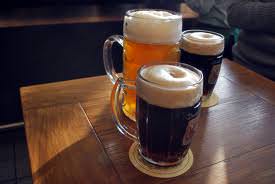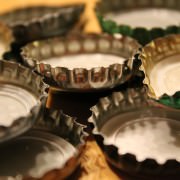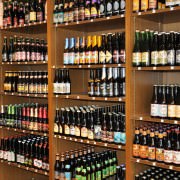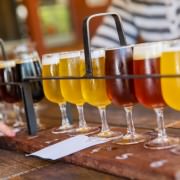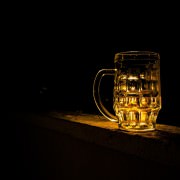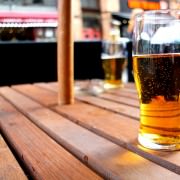Session Beers: We’ll Drink to Another Round!
The old tradition of friends gathering together for a few rounds is certainly a time-honored one. Speaking of “time,” however, how long can the average patron order one round after another (or painstakingly nurse just one or two drinks) before everyone calls it a night (or a day)? Well, with “session beers” – defined as highly “drinkable” brews that have an alcohol by volume (ABV) content of 5% or lower (or 4.5% and below, depending on who’s talking) – customers can stick around longer and order more drinks without feeling the ill effects of overindulging. Patrons are therefore not only drawn to establishments that offer a great selection of “sessionable” beers, but they’re also happy to pay a good price for each drink and, when all is said and done, to order more of them.
Origin of the “Beer Session”
How did the concept of the “session beer” get its start? During World War I, British shell production workers’ long, government-regulated work schedules basically allowed them two four-hour “sessions” when they would be able to have a few drinks – one of those sessions being from 11:00 in the morning to 3:00 in the afternoon (after which they would need to return to work) and the other taking place from 7:00 to 11:00 in the evening (after which time they had to make it home, preferably without incident). Therefore, these workers’ motivation to be able to drink eight pints in one long sitting – but then be able to continue about their business – was high; this motivation made two types of cask-conditioned beers that had ABVs of no higher than 3-4% their ideal choice. As Houston Press blogger Nicholas L. Hall explains, however, being able to have a few rounds of cold beers in the modern-day summer heat (without living to regret it) is motivation enough for the session beer of the twenty-first century. Put simply, Hall describes a session beer as being “ its own hydration plan.”
But Where does “Low ABV” Meet Taste?
In addition to needing to have a low alcohol content, a drink is not truly a session beer unless it also has the kind of great flavor that inspires another round. Many popular beers are considered “sessionable,” including Kölsch, Pilsners, Berliner Weiss, English Bitters, and Witbiers. Session beer enthusiast Lew Bryson, who blogs at http://sessionbeerproject.blogspot.com/and declared this past May “session beer month,” describes the flavorful range of brews – like those featured in Portland, Oregon’s Mighty Mites Session Beer Fest – as ranging from “single hopped IPA’s to tart refreshing Berliner-Weisse’s and Lagers and even a session Cider.” When it comes to impressively low ABVs, by the way, Widmer’s Portlander Weisse comes in at 3.4% – and Jester King offers its Commercial Suicide (an oaked farmhouse mild) at just 3.5%, as well as its Le Petit Prince (a farmhouse table beer that comes in at an amazing 2.9 %). Importantly, all of these still manage to be absolutely full of great flavor.
Lower Alcohol Content, Higher Drinkability
To sum it up, The Session Beer Project blogger’s advice seems to be twofold – and it reveals, actually, how flavor and ABV in some ways naturally go hand in hand:
Number one, session beers should, in his opinion, stick to an ABV of 4.5% or lower. (After all, the lower the percentage, the more beers one can sensibly drink during a “session”).
Number two, part of the whole point of a session beer is that what people want more of is flavor, not a higher percentage of alcohol – and that this flavor should have a broad appeal. The less sour the beer, he says, the wider and less specialized its following will be. If that’s the case, then, that’s great news for bar owners, as sessionable brews could serve an important function as the perfect choice for patrons who don’t normally like the taste of beer. Clearly, the session beer trend has nowhere to go from here but up. We’ll drink to that.
- Uncorkd Adds New Vendor Purchasing, Tracking and Reporting Functionality - February 13, 2018
- Uncorkd Adds New Inventory Management Functionality with POS Integration - July 24, 2017
- How Many Red or White Wines Should You Have on Your List - May 3, 2016

